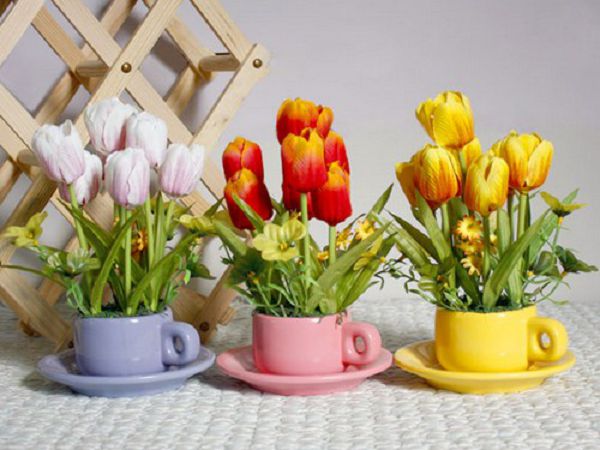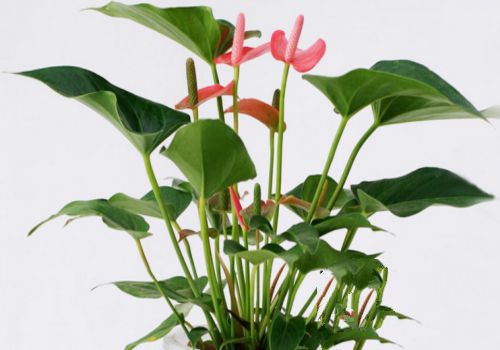Effect of temperature on the growth and development of flowers

There are many foliage plants can only live in medium and high temperature environment, if at low temperature, it will produce frost injury, or even death. For example, Lou's sea taro, its optimum temperature is 20 ℃ 30 ℃, and the room temperature in winter should not be lower than 18 Mel. Variable leaf trees will shed leaves when they are cold, and ferns also avoid low temperature. Taro plants avoid low temperature most. Once the ambient temperature is below 15 ℃, the leaves will shrink, curl and fall off. Therefore, if the indoor temperature in winter is lower than 15 ℃, you should pay attention to the selection of foliage plants.
I.
1. Temperature affects the development of flowers.
Temperature affects not only the geographical distribution of flower species, but also every process and period of flower growth and development. For example, the dormancy of seeds or bulbs, the elongation of stems, the differentiation and development of flower buds are all closely related to temperature. Different developmental stages of the same flower have different requirements for temperature, that is, from seed germination to seed maturity, the temperature requirements are constantly changing. In the case of annual flowers, seed germination can be carried out at a higher temperature, and the temperature is required to be lower during the seedling period, but after the seedlings grow to the flowering and fruiting stage, the temperature requirements gradually increase. The germination of biennial flower seeds is carried out at a lower temperature, and the required temperature is lower during the seedling period, otherwise it can not successfully pass through the vernalization stage, but when flowering and fruiting, it is required to be slightly higher than the temperature in the vegetative growth period. Low temperature is also the key for many seeds to break the dormancy period, such as collecting Trollius seeds at the top of Baihua Mountain at an altitude of 1800 meters, and sowing in the open field in Beijing at room temperature. Few seeds germinate, and the germination rate can reach more than 60% after low temperature treatment.
2. Temperature affects the nutrient accumulation of flowers.
The high temperature during the day is conducive to the formation of carbohydrates by photosynthesis, while the low temperature at night is beneficial to inhibit the decomposition of carbohydrates by respiration. Suitable diurnal temperature difference: tropical plants, 3-6 ℃; temperate plants 5-7 ℃; desert plants more than 10 ℃.
3. Temperature affects flower bud differentiation and flowering.
Some plants must differentiate flower buds when the temperature is higher than 25 ℃ and then blossom after a certain low temperature to break dormancy. Such as rhododendron, camellia, plum, gladiolus, evening jade, canna and so on. Some plants need to differentiate flower buds at lower or lower temperatures. Such as autumn sowing grass flowers calendula, daisies and so on.
4. Temperature affects design and color
Many flowers become lighter with the increase of temperature and the weakening of light intensity. For example, Chinese rose and dahlia become lighter in color and brighter in cool places under high temperature conditions.
5. The influence of limit temperature
Extreme high temperature and extreme low temperature can lead to plant death. Sudden high temperature and low temperature also have a great impact on the growth and development of flowers, too high and low temperature will cause flowers to suffer damage or death.
2. the effect of temperature on the distribution of flowers.
1. Cold-resistant flowers are mainly distributed in cold areas. these flowers have strong cold resistance and can withstand the low temperature above 0 ℃, and some of them can withstand the low temperature below-5 ℃-10 ℃ and can survive the winter in the open field in Beijing. Such as pansy.
2. Tropical and subtropical native cold-resistant flowers such as flowers can not stand the low temperature of 5-0 ℃, so they need to be cultivated in greenhouse in the north. Such as tropical orchid, variable leaf wood and so on.
3. Semi-cold-tolerant flowers native to temperate regions are mostly native to warm temperate areas, and their cold tolerance is between cold-resistant and non-cold-tolerant flowers, which need to be cold-proof in winter in the north.
Related
- What if the leaves of potted flowers turn yellow?
- Florescence Control of several Flowers
- Anti-freezing technology and post-freezing nursing technology of flowers
- What is the classification of flowers? What are the common methods of flower classification?
- Prevention and control of alkali and acid damage of flowers in courtyard
- Technology of Anti-freezing and restoring growth of Flower seedlings in greenhouse and greenhouse
- How does flower fertilization not hurt the root? Fertilization technology of flowers
- Key points of disinfection in flower greenhouse
- Several pesticides that are banned or used cautiously in flowers
- How to fertilize the flowers that watch the leaves?



